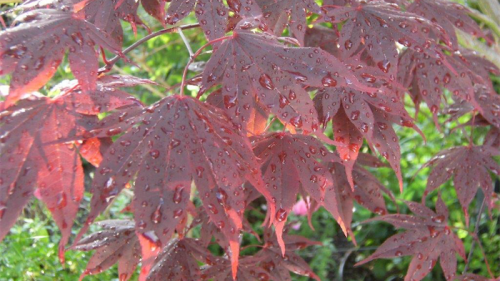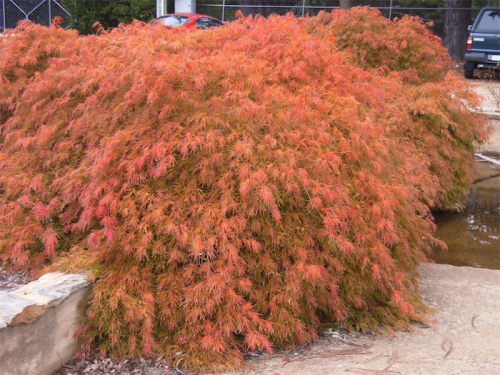
We owe much to the early pioneers for planting Canberra: Weston, Bruce and Pryor. The planting of street trees, for which they were responsible, resulted in the right balance between deciduous and non-deciduous trees, especially spring blossom trees, conifers and native trees. This planting approach is particularly evident in the older suburbs.
Unfortunately, in the newer suburbs and town centres in the late ‘60s and ‘70s there was a change in policy. In Belconnen, the planners decided to follow what was, at that time, the “bush capital” concept, which meant almost every street planting consisted of eucalypts, leading to the high costs for maintenance. Also, these evergreen trees cast shadows during winter, affecting the efficiency of solar panels and photovoltaic systems.
The almost total plantings of eucalypts rob residents of magnificent spring blossoms and the kaleidoscope of autumn leaf colour.
Falling leaves of deciduous trees are a rich source of compost, used for adding valuable nutrients to the soil. Shredding the leaves with a mower is an effective way of breaking them down for adding to garden beds. I put 50 per cent of my leaf mulch on to the compost heap and 50 per cent directly on to garden beds. They rot down and worms, vital in every garden, just love the leaves.
Perhaps there may be a tourist attraction in a festival promoting the colours of autumn leaves as Tumut does with its Festival of the Falling Leaf.

This is a relatively small selection. The best place to look is a garden centre where coloured labels give the relative ultimate sizes. There is:
- A crabapple, Malus “Tom Matthews” with stunning pink flowers in spring followed by dark purple-red fruit and spectacular red, yellow and orange leaves in autumn. Growing to just 2.5m high with a similar spread.
- Japanese maples have always been a favourite, not only for their autumn leaf colour, but many with stunning leaf colour throughout the spring to autumn. Acer palmatum “Senkaki”, known also as the Coral Bark due to its coral pink new growth of branches with deep yellow autumn leaves. Slightly larger to 4m high with a 3m spread.
- Acer palmatum “Bonfire”, which as the name suggests has brilliant foliage in spring and autumn.
- The leaves of Acer “Villa Taranto” turn in spring to a deep green with a reddish tinge and rich golden-yellow leaves in autumn.
A word of warning; if you are in a new suburb with little or no tree protection from hot, scorching summer winds, I suggest you put off planting the fine-leafed Japanese maple, many of which have fine, dissected leaves and are quite delicate, especially the grafted weeping maples as illustrated here.
Jottings…
JUST one hint this week to combine with the autumn feeding program using certified organic fertilisers: I recommend giving all acid-loving, deciduous plants (such as daphne and camellias) a dose of magnesium sulphate, ie Epsom salts.
Magnesium is the centre of the chlorophyll molecule, so essential for good, healthy plant growth. The usual indicator is yellowing of leaves. Mix one heaped tablespoon full with nine litres of water.
Who can be trusted?
In a world of spin and confusion, there’s never been a more important time to support independent journalism in Canberra.
If you trust our work online and want to enforce the power of independent voices, I invite you to make a small contribution.
Every dollar of support is invested back into our journalism to help keep citynews.com.au strong and free.
Thank you,
Ian Meikle, editor




Leave a Reply